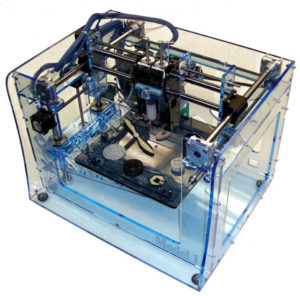 As 3D printing technology continues to improve, scientists are finding bold and inventive new ways to use it that look to be changing the world as we know it.
As 3D printing technology continues to improve, scientists are finding bold and inventive new ways to use it that look to be changing the world as we know it.
Science News reports on a new type of ink developed for use with 3D printers containing live bacteria cultures. Known as “living ink”, there are already several proposed uses for it in multiple different fields.
Researchers who created and tested did so by combining a mixture of different polymers with live bacteria, as well as nutrients to help them grow. By doing this, the ink can both function as 3D printing material as well as a live bacteria colony.
By doing this, scientists have opened the doors for many applications in the real world. By utilizing certain types of bacteria, this ink could be used to clean up oceanic pollution like oil spills by introducing it to the affected areas, the bacteria breaking down and neutralizing the chemicals in question. Photosynthetic bacteria could also be used to generate solar power in objects printed with the ink, essentially created self-powered technology.
The medical field, though, is where the living ink could really shine. 3D printers are already set to revolutionize hospitals by allowing them to generate whatever supplies they need on the fly, but with living ink, these supplies could actively work to help cure patients. 3D printed bandages, for example, could organically conform to a patient’s wounds, with bacteria working to prevent contamination by securely sealing against the skin without any gaps. Additionally, hard to patch areas like elbows or knees could more easily be bandaged, as the flexible nature of these bandages would lower the risk of them falling off or wrinkling.
Additionally, these substances would all be reusable in theory. Though the nutrients contained in the 3D printed structures would be limited, researchers say that simply submerging them into more nutrients would do the trick in revitalizing the bacteria, meaning they can live for an indefinite period so long as more nutrients are available. They could also be genetically modified, creating a variety of beneficial bacteria perfect for different jobs.
Though it will likely be some time before this method of 3D printing is introduced to the mainstream, it is no less groundbreaking in scope and scale. Researchers are sure to continue testing to find as many uses as possible for this revolutionary new method of 3D printing.





